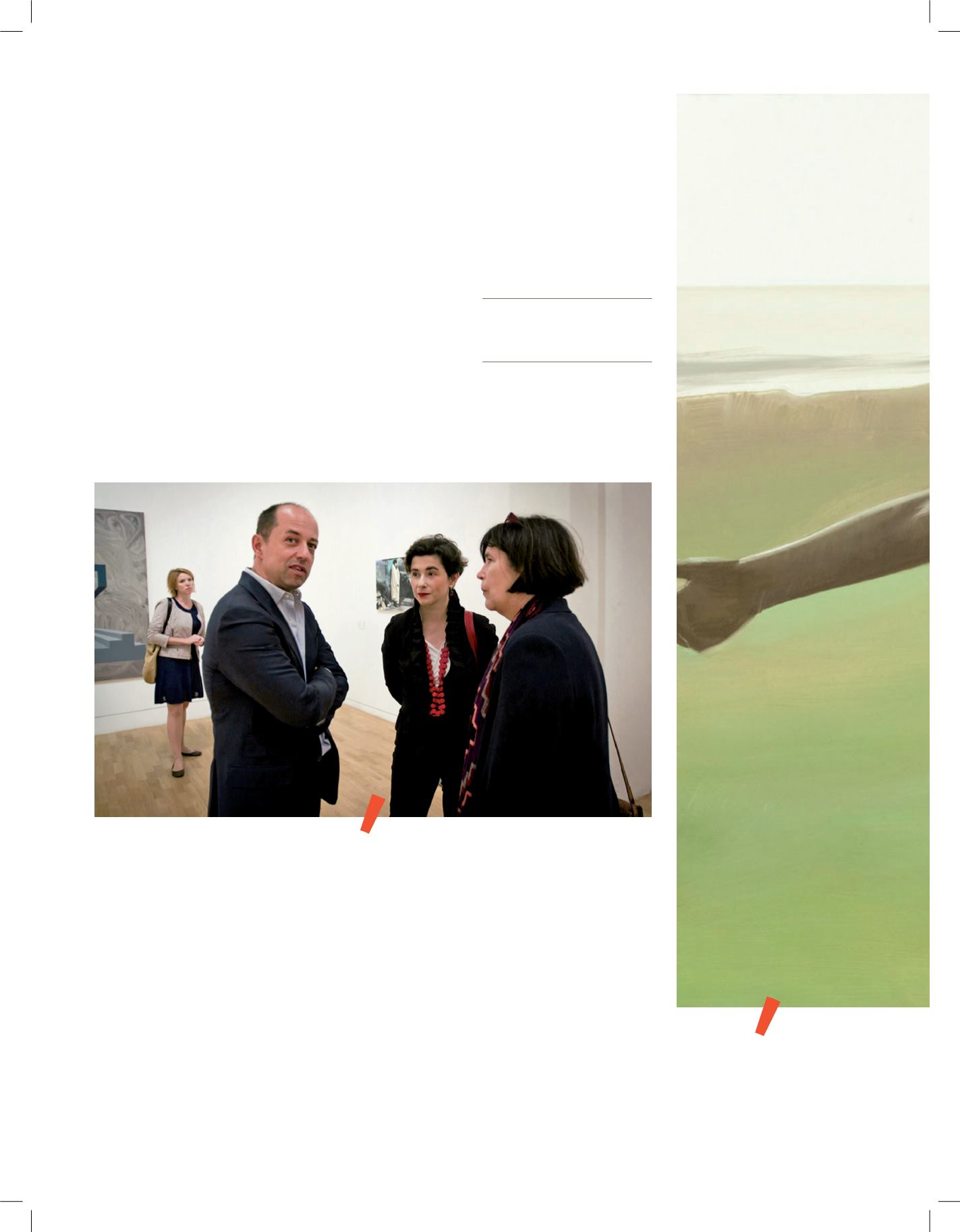
Sasnal rejects the distinction
between high-brow and low-brow
culture – he doesn’t appraise.
Rather, he encourages reflection.
The showwas divided into three
sections. The first consisted
of Sasnal’s latest works, from
2005-2011, inspired by events
in the media and documenting
the artist’s travels. The second
section presented the early days
of Sasnal’s artistic pursuits, with
works addressing issues likeWorld
War II and the Holocaust. The final
section was devoted to the artist’s
film and photography work.
“Wilhelm Sasnal initiated a new
understanding of art, especially
painting,” suggested the exhibitions
curator Achim Borchardt-Hume
in an interviewwith
Rzeczpospolita
daily. The artist himself states:
“Although I work in various forms
of art – photography, film – I still
believe in the power of painting.
I always come back to it.”
Included in the showwere the
paintings
Maus 5
, inspired by Art
Spiegelman’s graphic novel dealing
with the Holocaust;
bathers at
Asnières
, referencing the work of
Georges Seurat; and personal genre
pictures such as
Untitled (Kacper
and Anka)
depicting the artist’s
wife and son. Considered by many
critics to be the leading painter
of his generation, Wilhelm Sasnal
claims that most important to him
is the choice of what to put on the
canvas, and he chooses what is
close to him emotionally.
participating
organisations
:
adam mickie-
wicz Institute; Whitechapel gallery; Polish
Cultural Institute in london
Wilhelm Sasnal,
Kacper,
2009
Wilhelm Sasnal exhibition opening.
Pictured: Achim Borchardt-Hume (exhibition
curator) and Joanna Kiliszek (deputy director of the
Adam Mickiewicz Institute)
62
adam mickiewicz institute


